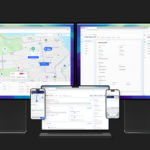Editor’s Note: One basic security step that might be overlooked on a college campus is the safe handling of cash payments for things like food, supplies, parking, books, etc. One might be tempted to think that the growing popularity of digital payment options like Venmo, Cash App, and ApplyPay might make cash management a thing of the past. However, 37% of members of Gen Z, who are now ages 16-25, still prefer to use cash for in-person purchases, compared to 22% of both Millennials and Gen Xers, according to the Financial Brand.
Keeping this in mind, Campus Safety has pulled from our vaults the following article on currency management on college campuses. Although this article is originally from 2014, the threats and suggestions listed below still apply today.
College campuses present an unusual set of internal and external challenges related to the handling and managing of cash. With the threat of theft and loss being so prevalent, campus administrators are continuously working to create the most efficient and secure campus environment for its currency.
The measures necessary to protect cash can differ, depending on the size of the campus, student population and security needs. While universities vary in what they do to protect their cash, the threats they face are similar in nature. Below are three main threats that university administrators must mitigate in order to properly address their cash’s security.
Threat 1: Variety of Cash Points Across Campuses
Cash is handled at a wide variety of points across campuses in university stores, cafeterias, on-campus banks, admissions offices and more. The quantities of currency and the nature of cash transactions vary widely at each point, from large tuition amounts in admissions offices to small purchases like coffee and snacks in campus convenience stores.
The volume of cash in university shops, such as bookstores, varies by season, and during the start of school or the holidays, the cash flow and foot traffic of the store can increase greatly.
At each of these points of sale it’s critical to secure cash before it reaches a final collection end point, and smart safe technology helps to make that possible. Smart safes allow employees to take money directly from their registers and deposit it into one onsite safe where it is then counted automatically, recorded and monitored.
Smart-safe technology works like a sophisticated vending machine for counting and securing cash. Money goes in and is processed and recorded. This technology is used heavily by fast food chains and other retailers where there are multiple points of sale in a single location.
Related Article: 10 Steps to Safe Cash Management
Colleges have many similar environments, such as dining halls and on-campus shops, which pose similar challenges for handling and collecting currency. The ultimate goal in campus cash processes is for cash to be handled by as few people as possible in order to minimize risk.
Administrators should also consider the frequency of cash collection from traditional or smart safes and points of sale at the various locations on campus. Infrequent collection means registers hold cash for longer periods of time than necessary. This poses a greater threat externally, making registers a more fruitful target for burglars.
It also poses a greater internal threat as dishonest employees may become aware of the large supply of money in cash register drawers, tempting them to pocket the cash because they believe that their actions will go unnoticed.
Threat 2: Internal Handlers
Multiple points of sale mean that many hands touch money before it reaches a campus vault or is picked up by campus police or an armored car service. The ultimate goal in campus cash processes is for cash to be handled by as few people as possible in order to minimize risk. Often the greatest threats to cash are internal, including forms of shrinkage like employee theft, simple errors and discrepancies.
These internal threats are at the top of mind for businesses. Universities utilize cash handlers in different ways. Some may rely on their campus police to help them move currency around the campus, while others may simply have employees transport it.
For example, if a university has a cafeteria/dining hall with many different vendors (Starbucks, Mc- Donalds, etc.) in one location, they may have their cash picked up at each vendor. Alternately, some campuses may only collect at one point in the building in this situation.
No matter which collection method is used, the greatest threat is still human error from employees. That is why it is crucial to provide proper training when an employee starts a job on campus and ongoing encouragement of best practices during their time of employment. To create a more secure environment, campus administrators need to both enhance their use of automated cash management technologies such as smart safes while simultaneously looking to constantly train employees in best practices in effective cash management.
Threat 3: Major Events
Student life on many campuses revolves around sports, concerts, shows and other major events. These crowded environments present a challenge for the university’s cash flow, as all the ticket offices and concession stands represent vulnerable points. It’s not only necessary to ensure the whole event and its surroundings are secure, but each of these points of sale needs to be secured as well, just as they are in the everyday campus processes.
Related Article: Sports and Music Venues Reduce Touchpoints with RFID and NFC Payments
Due to the fact that these environments are so large and often chaotic, they require much more intensive special processes. While it is ideal to have an automated process at every point of sale, this may not be able to be a reality for many schools.
One of the main ways to mitigate the risks with lower costs is to have multiple cash pickups during the largest events, especially those that last multiple days — such as festivals or spring weekends hosted by many universities — rather than waiting until the event is over.
Many Young Adults Still Use Cash
Although it may seem or be assumed that the use of credit/debit cards, online payments, and smartphone payment options like ApplePay, Venmo, and Zelle is increasing rapidly, cash is still prominent on campuses.
Gradual investments in automated processing equipment — like smart safes or cash recyclers, rather than one large campus overhaul — are good options for any university trying to update their cash handling, even if there is a concern about cost.
To avoid negative attention and keep parent and student worries at bay, safe currency handling should not be an afterthought. It must be a part of a school’s overall crime deterrence plan.
There is no prescriptive plan of action that all schools should follow, but each school should develop its own measures tailored to its security needs. To begin this planning process, university administrators should first assess their institution’s exposure to these threats. The first steps to mapping out where a school’s vulnerabilities lie involve reflecting on where all points of sale are and what security is at those locations, how prepared its employees are to handle cash and what type of events the school hosts.
Robert J. Dunbar was formerly the senior director of cash management products at Dunbar Armored. This article was originally published in 2014.
NOTE: The views expressed by guest bloggers and contributors are those of the authors and do not necessarily represent the views of, and should not be attributed to, Campus Safety.













